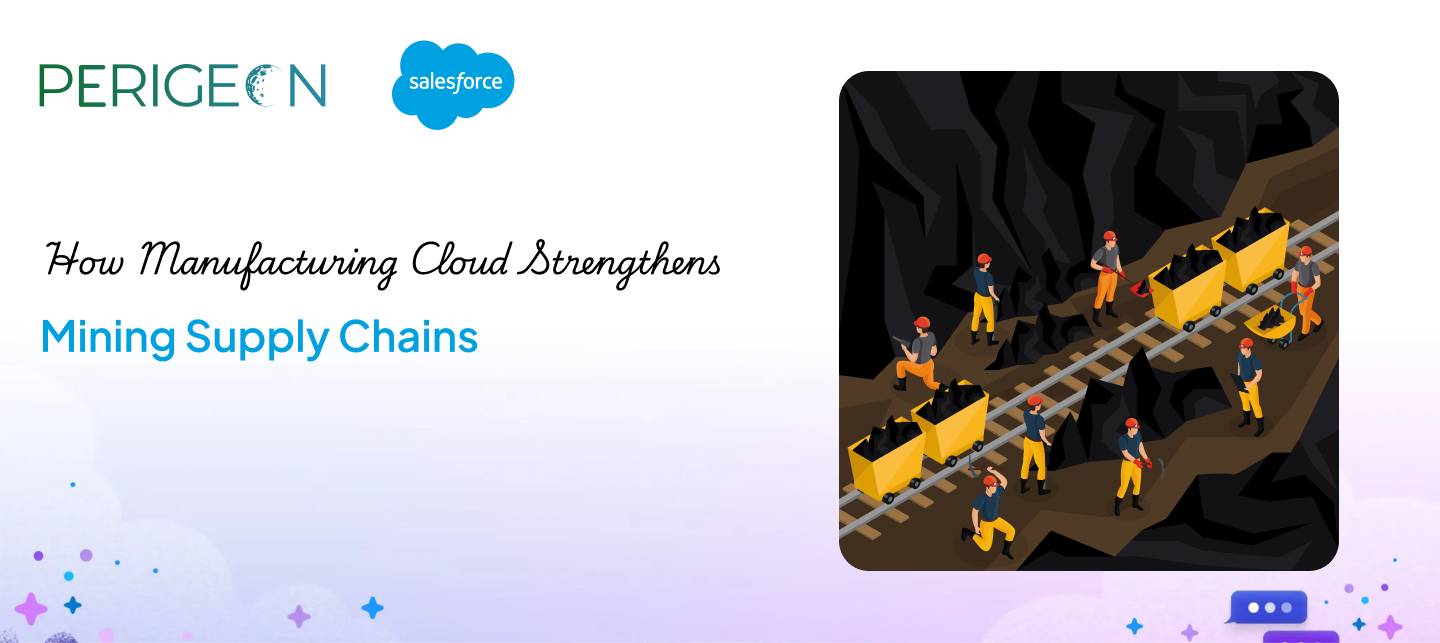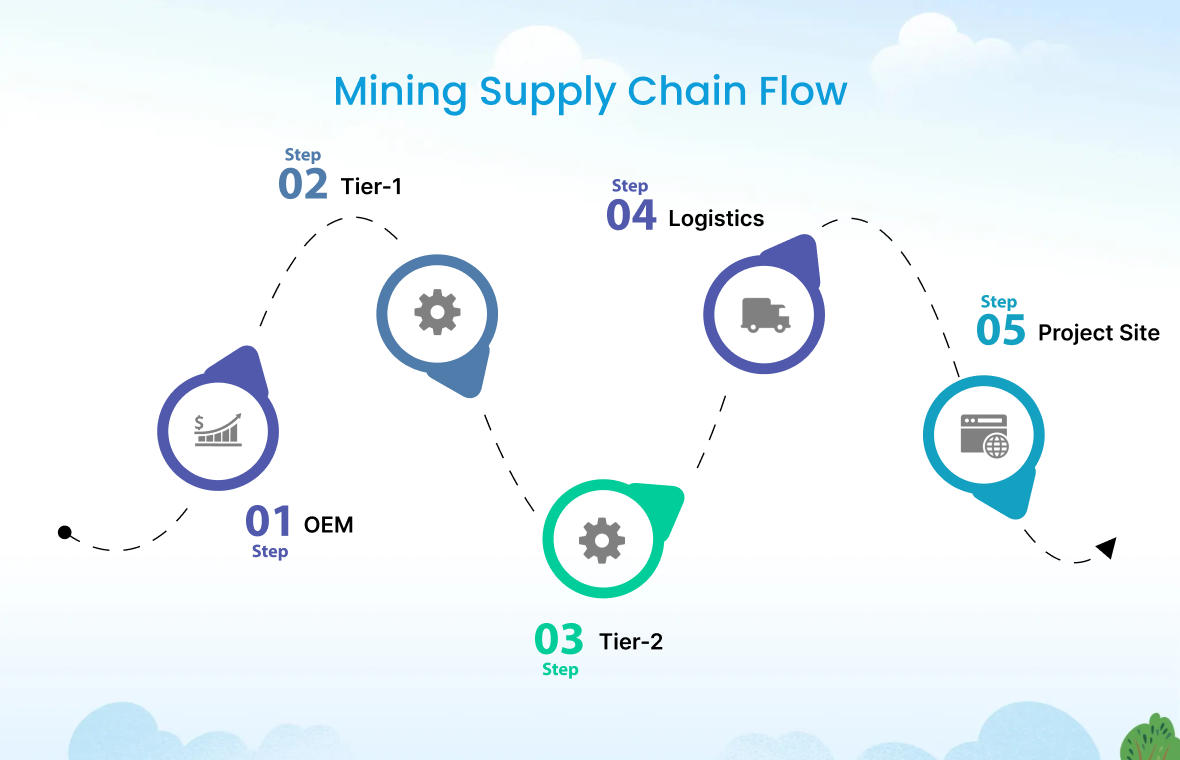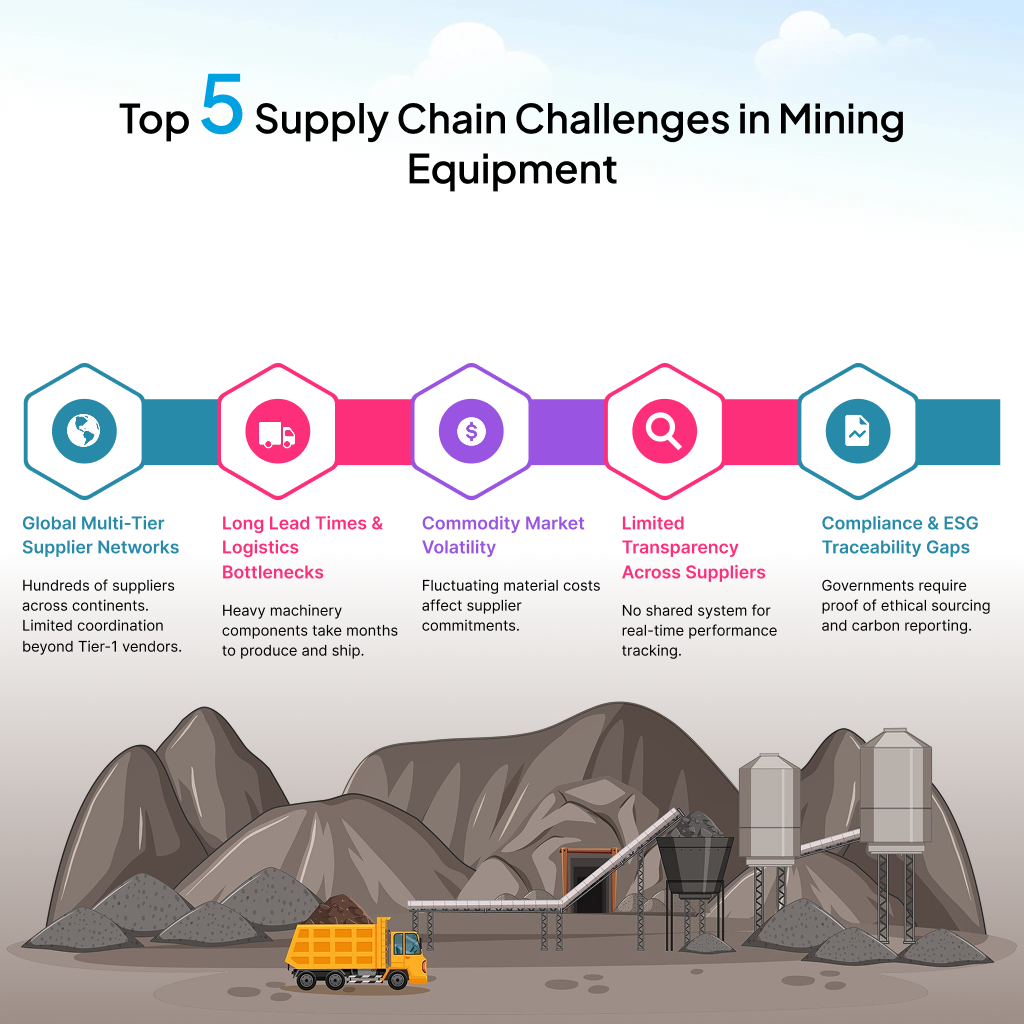Table of content
Introduction
The Complexity of Mining Equipment Supply Chains
Challenges in Managing Mining Supply Chains
How Salesforce Manufacturing Cloud Strengthens Supply Chains
Case Study: Global Mining OEM Supply Chain Transformation with Salesforce
The Future of Supply Chain Management in Mining Equipment
Conclusion
Introduction
Mining equipment manufacturers depend on highly complex, global supply chains — from engine and hydraulic system suppliers to steel manufacturers and electronics vendors. Each delay or disruption can stall multimillion-dollar mining projects.
According to PwC (2025), over 35% of mining OEMs reported supply chain delays costing them $50M+ annually due to fragmented planning and poor real-time coordination.
Salesforce Manufacturing Cloud provides a unified platform that strengthens mining equipment supply chains by integrating sales forecasts, supplier visibility, and AI-driven risk management — ensuring resilience and operational agility.
The Complexity of Mining Equipment Supply Chains
- Geographically distributed suppliers (steel, hydraulics, electronics).
- Long production cycles (12–24 months).
- Multi-stage approvals involving clients, governments, and contractors.
- Dependence on raw material availability (steel, copper, lithium).
👉 Without visibility, supply chain risks multiply — from component delays to compliance penalties.
Challenges in Managing Mining Supply Chains
1. Global Multi-Tier Supplier Networks
- Hundreds of suppliers across continents.
- Limited coordination beyond Tier-1 vendors.
2. Long Lead Times & Logistics Bottlenecks
- Heavy machinery components take months to produce and ship.
3. Commodity Market Volatility
- Fluctuating material costs affect supplier commitments.
4. Limited Transparency Across Suppliers
- No shared system for real-time performance tracking.
5. Compliance & ESG Traceability Gaps
- Governments require proof of ethical sourcing and carbon reporting.
How Salesforce Manufacturing Cloud Strengthens Supply Chains
1. Unified Sales & Supply Chain Visibility
- Links sales forecasts directly to material planning.
- Ensures suppliers align with confirmed project timelines.
2. Supplier Collaboration via Experience Cloud Portals
- Suppliers access:
- Production forecasts
- Delivery milestones
- Compliance requirements
- Promotes transparency and faster updates.
3. Real-Time Forecast Sharing & Material Planning
- Dealers and OEMs share updated demand signals.
- Suppliers automatically notified of requirement changes.
4. ERP & Logistics System Integration
- Syncs Salesforce with ERP (SAP, Oracle) and logistics systems.
- Enables end-to-end visibility — from raw materials to delivery.
5. AI-Powered Risk Prediction & Scenario Planning
- Einstein AI identifies:
- At-risk suppliers
- Potential delays or cost spikes
- Alternative sourcing scenarios
Case Study: Global Mining OEM Supply Chain Transformation with Salesforce
A mining OEM in Australia faced:
-
- Frequent supplier delays during commodity upswings.
- Lack of visibility into Tier-2 vendors.
After Salesforce:
- Supplier collaboration portals implemented across 4 continents.
- Delivery delays reduced by 32%.
- Real-time alerts prevented $12M in potential losses.
The Future of Supply Chain Management in Mining Equipment
- Blockchain-Enabled Traceability → Proof of ethical sourcing and ESG compliance.
- Digital Twin Supply Chains → Real-time simulation of logistics and material flow.
- AI-Driven Resilience Planning → Predictive mitigation of disruptions.
- Sustainable Supplier Scoring → Automated ESG risk assessment.
Conclusion
Mining supply chains demand agility, visibility, and trust. Salesforce Manufacturing Cloud provides:
- Unified view of sales and supply
- Supplier portals for collaboration
- ERP–logistics integration
- AI-powered risk forecasting
With Salesforce, mining OEMs build resilient, transparent supply chains that support global growth.
⛓️ Strengthen your mining supply chain today.
👉 [Book a Manufacturing Cloud Strategy Session with Perigeon]








